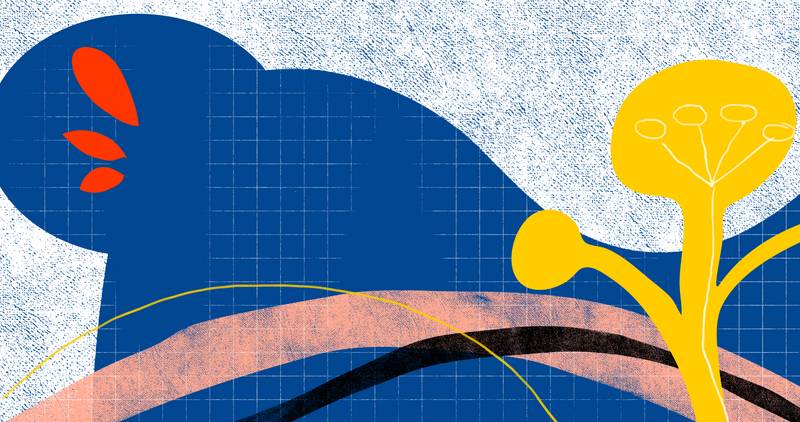

Pehmee aka The Soft Collective’s mission, is to create representation and spaces for marginalized bodies in media, art, fashion and culture. We want to upkeep and improve methods and practices that we have learned through our activism and created ourselves. Our focus is on evolving, and pushing towards equality is way beyond representation issues and community work, but we believe grassroots is where we can make the biggest impact with the resources we have available for us.
Music videos typically are used to entertain the public, but the effects of music videos can be much more far-reaching than just entertainment. They originally served the purpose of creating an outlet where artists could generate publicity for their work, broaden their popular appeal, and reach wider audiences with interesting audio-visual content. Over the years, the visual imagery in music videos has increasingly become as significant as the music itself. Today music videos have become major outlets for spreading views and stereotypes that influence popular culture. The media images that society produces provide insight into who and what is important in common culture. Music videos are one medium through which values and ideals are presented.
The popular images in current music videos tell viewers stories about what is “the norm” in terms of gender, race, and sexuality. As we watch these images, we learn who we are supposed to be, what we should look like, and what we should do to fit in.
Whenever an event, group of people or issue is presented through any kind of media, it becomes representation due to the fact that meaning is constructed through camera work, editing, sound and mise en scéne, aka the process of setting a stage, placement of actors, scenery and properties. Because of these processes that direct the gaze and emotional response, it is impossible to construct realistic representations fully. Often it is constructed through stereotypes to make issues, groups of people and events easier to identify with. Like any other media context, music videos create representations that audiences use to create their own interpretations.
We dug in, and this is our quick outtake.
- Commonly only heterosexual relationships have been represented in music videos, arguably because being LGBTQIA+ wasn’t accepted in society. Recently, societal opinions of sexuality and gender have evolved, and there has been a wider range of sexualities and genders represented in music videos. Yet, still, we do not consider the variety of visibility is enough to match the societal realities.
- Cultural appropriation has been a frequent issue in music videos. For example, blackness and brownness are well presented in the music industry and video productions, but they rarely challenge the stereotypes placed on them within the mainstream media. Black women are stereotyped as “Jezebels,” and Black men are stereotyped as “hypersexual”. The combination of race and gender play a vital part in how our hegemonic society perceives an individual.
- Scholars have established a few of the stereotypical and problematic ways that cis-women are represented in music videos. Thin cis-women are overrepresented, supporting the narrative that only one type of body is attractive and desirable. The impact of only seeing skinny models in music videos has been reported as a factor that increases body dissatisfaction in adolescent cis-girls. Another body type ideal has emerged in popular culture and music videos: curvy but thin cis-women. The impact of this body type on viewers’ body image has not been researched. The impact of available music video representations on marginalized bodies has not been researched.
When curating this music video watchlist, we wanted to focus on videos that challenge the status quo of music videos, where only thin, white, straight, and able-bodied people are the main focus. We must pay attention to the reflective representation that we create and consume—those representations we do not choose or decide to intake. We should think about how to build a safer visual culture that supports the multitude and complexity of human representation. We can start by recognizing normativity, seeking and actively supporting videos and artists who divert from them.
THE LIST:
JUP DO BAIRRO - O CORRE
Jup Do Bairro is a transdisciplinary artist from the favelas of Sao Paulo who expresses her experiences through multiple art forms. She is a self-taught stylist, actress, singer and performer, just a few of her talents. She works with narratives related to her body, which she self-defines as the body of “a black, fat person from the periphery”.
Brazilian music has always been shaped by black culture, but not surprisingly, the highest-earning musicians are mainly white and cis. Jup’s knack for telling vivid stories is evident throughout her videos, and the combination of vulnerable lyrics, tongue-in-cheek statements and genre-bending dance rhythms is more than just infectiously brilliant.
Jup Do Bairro is truly an icon of our time, so go ahead and head on to “O Corre” and its delicious visual world.
ISAAC SENE - KUUMA JÄBÄ
BIPOC and queer representation in the Finnish language, oh do we have space for more of that! Isaac Sene is a Finnish artist and a songwriter. Their modern pop music reaches beyond genre barriers.
Isaac Sene entered Uuden Musiikin Kilpailu -competition (UMK) with their song Kuuma Jäbä. UMK is a Finnish version of a competition where artists compete for a spot in the Eurovision Song Contest. The song has a solid danceable disco vibe and is fun and flirty.
The song does not have its music video yet, but the lyric video is worth watching. Lyrics, we love that for us!
MAKIFISOLA ft. UHURU - KHONA
This music video was published back in 2013, but we felt compelled to add this to the list. “Khona” is a song by South African duo Mafikizolo. The video has nearly 20 million views on YouTube and has challenged the representation of masculinity in South Africa.
Vada Magazine said, “Although Mafikizolo hasn’t been forthcoming on any symbolic meaning behind the placement of these dancers, their bold decision to place them so prominently could still be seen as a potentially dangerous idea on a continent where homosexuality is illegal in 34 countries.”
We recognize that it is never easy to be a pioneer, and we wanted to pay our respects for this OG of a song that had its impact in bringing the afro house to a larger population across Africa.
TENI - MOSLADO
Teniola Apata, professionally known as Teni The Entertainer, is a Nigerian singer, songwriter and entertainer. Our love for this music video comes from the undeniable homage to Missy Elliot. Teni’s brand has been likened by some to Missy’s due to its ground-breaking abilities to shift from the norm.
In the music video of Moslado, you can find the singer performing her verses in authentic ‘90s VHS video style as it zooms in and out of her frame. Teni can be seen rocking different looks and hairstyles, all determined to show off her groovy style and her inspiringly firm sense of self.
Fun fact: Teni wrote “Moslado” at a music camp in Lagos while she was sitting on a toilet seat, and the producer was playing the beat in the sitting room.
MANAL - NIYA
Manal Benchlikha is a Moroccan pop singer-songwriter who sensitively and beautifully mixes traditional and modern melodies. She is someone you should keep an eye on. She emphasized the value in her work she attributes by using her music videos as a medium to address crucial topics such as gender stereotypes and feminism.
Her song “Niya” entails the story of a loving “Shikha” who impatiently awaits her beloved to come and ask for her hand in marriage. Yet, in a society where her occupation is frowned upon and her fate doomed, she never fulfils this fantasy. Shikhat are professional performers who are an important part of Moroccan rituals and celebrations. At the same time, though, their activity is frowned upon, not only because they are independent women who work and spend time in the company of men, but also because they perform in public, using their bodies for money.
The video plays an homage to traditional aspects of Moroccan culture, specifically the culture that is preserved, practised, and created by women for other women and by women for the broader Moroccan socio-cultural fabric.
ROSA COSTE - HIUKSET
Rosa Coste is a Rovaniemi based artist that is undoubtedly the future of Finnish R&B and soul music. Coste grew up listening to hip-hop, rock and African rhythm music and lists Lauryn Hill, J.Karjalainen, Gracias, SZA and Gettomasa as her influences. Rosa Coste, who started her career playing acoustic gigs in her hometown, is quickly becoming one of Finland’s most promising new artists.
The video is a black and white loop, but in its simplicity, it works as an important and beautiful representation of afro-Finnishness. Music by brown people from northern Finland has been nearly non-existent.
SNOR - HKAYA
Snor is one Moroccan rapper that is on constant play in our playlists. Everything from their music videos to his way of jumping on the beat is unique. Especially in the music video for the song “Hkaya”, Snor has a very innovative style that combines streetwear with traditional fashion. Different kinds of pigtails combined with the ski mask excite us. His way of portraying/presenting himself is playful and interesting. Visuality in this music video is also something that we are used to seeing in MENA-regions rap music videos. It’s dreamy, colourful, shiny and very delectable. We rarely see character building for fat people in music videos that are not restricted to stereotypes. We have already called dibs on all the outfits.







